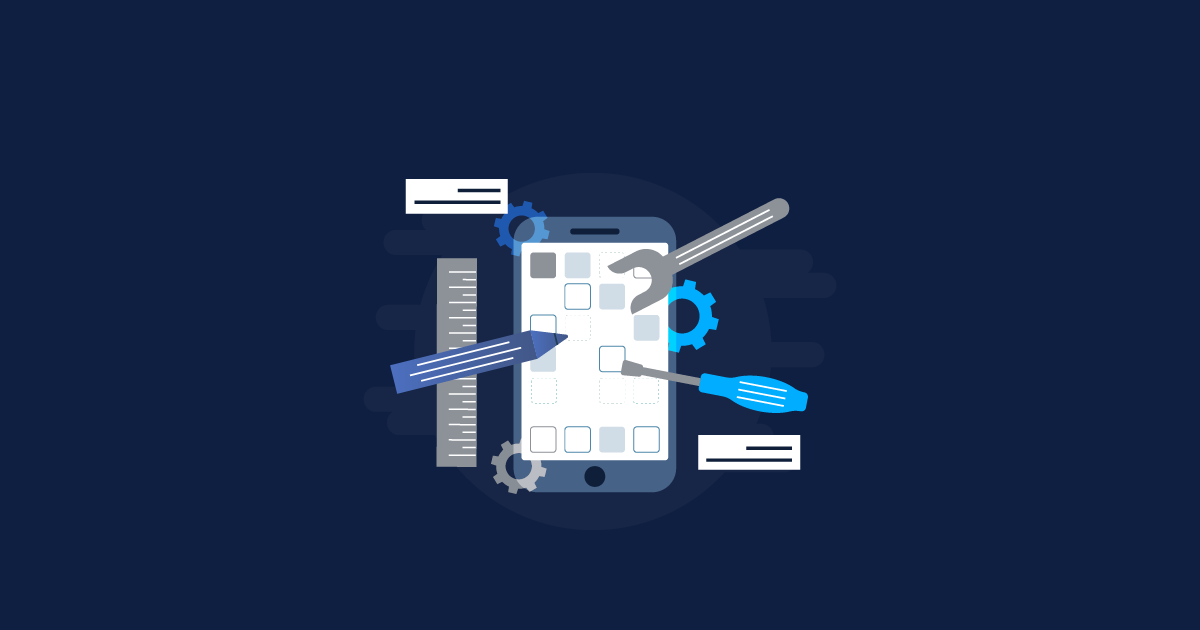We are living in a technology-driven world where simple actions are interrelated with a huge web of applications and or websites. All business operations are entirely dependent on various software that need to be upgraded frequently, and bugs are fixed instantly for seamless operations. It is always necessary to adopt automated testing multiple fixed procedures to enhance all business operations because manual testing is challenging.
Automated testing is an important aspect for any business to deliver a good return on investment (ROI). Practically, it is difficult to measure ROI in software testing, and measuring any test automation ROI is more challenging. Speed coupled with quality in a software development process is a continuing process, and it is impossible to ignore any of them. Every business needs to launch or update all the software products on time to offer greater customer satisfaction compared to other competitors.
Manual testing is a slower process compared to automation testing, and it is necessary for faster development cycles. Automation testing helps in executing tests faster with regression testing. Automation testing requires no or minimum human interventions and can be performed in all odd hours. However, automation testing may not be the right approach for all scenarios. Manual testing is obligatory, and automation testing is optional due to the various variables involved. Introducing test automation to manual testing scripts justifies the value of test automation. Investing time and money in test automation offers numerous benefits for specific business needs.
Software test automation is repetitive after each source code modification or before a new release. Manual testing increases test run time, testing time spent, and time to market. However, deploying test automation can considerably bring down the execution time and the time to market. Automated tests can be run multiple times with no additional cost after setting up. Advanced test automation tools provide innovative features such as the self-healing of scripts. They automatically detect or alter elements to detect the locators without any human intervention. The three most important parameters to consider in test automation ROI calculations are Speed, Quality, and Cost.
How Do We Calculate ROI
Calculating ROI on test automation is a measurement of how much QA time test automation saves. To measure tests automation to get the best data, all the test scripts need to be maintained. The most significant piece in test automation is to keep track of all the test scripts at all times and upgrade them whenever necessary. Calculating ROI for testing depends on the test scripts that are updated regularly—the number of scripts increases during the upgrading of all the test scripts with advanced features.
Measuring ROI is a challenging task because the time taken to test something is unknown. To calculate ROI for any test automation, it is necessary to work with your developers to understand as best you can how much time they’re spending writing and maintaining tests. These measurements are critical to your cost calculations.
Test automation helps in bridging the gaps in the QA department and saves time for manual testing. Adopting test automation involves testers who are well-versed in maximizing both software test coverage and are good at testing software in many ways. All the positive results in a testing phase are the keys to successful business operations. It is important to include the cost of training testers in test automation ROI calculations.
Test automation is beneficial as it never skips any step; however, fewer things slip away, causing disruption. Test automation works at a galloping speed than a human mind. The speed of test automation helps in identifying problems before they become outages. Test automation provides visibility well as helps in anticipating a sudden demand in the spike of any software. QA teams are a critical part of every software development life cycle. However, QA specialists work on the same test cases every day, in the same ways, for weeks or months, making the testing process tedious. Test automation ROI calculations provided by QA increase the value of an organization. The best way to maximize test automation ROI is to minimize the time spent for writing and designing tests scripts.
Agile software development is the newer and default trend for all software developers and QA’s. It is not possible to release any software solutions at rocket speed just to satisfy customers. The addition of test automation provides regular updates required for the software to keep up with the latest innovations and expectations.
Significant metrics to consider before calculating test automation ROI
The three most important parameters to consider in test automation ROI calculations are Speed, Quality, and Cost.
Speed
Every manual tester manually executes test cases for a fixed time every day. However, test automation tools practically work 24 hours a day, executing test cases automatically. Advanced test automation tools run a significantly large number of test cases within a short time. They increase the chances of detecting defects easily, at a low cost, and bugs are easy to fix up. The testing cycle becomes robust with the adoption of test automation, saving time and money substantially. Speed enhances the product quality output with fewer or no bugs in a real environment and saves time during the testing phase.
Quality
The testing life cycle involving test automation helps in minimizing defect leakages right from start to finish. The product quality increases by 25% with test automation when coupled with the right type of test automation. The risk of manual errors decreases, and it is easy to find bugs at an early stage. Test engineers who adopt test automation utilize the saved time to develop or execute new tests scripts and focus on more critical issues or features of the software.
Test automation increases the frequency of testing, high-quality product, and customer satisfaction.
Cost
Cost is the most important factor involved in test automation RIO. The problem with Test Automation is that the monetary benefits are never marked immediate. Viewing from a long-term benefit, the cost of setting up an automated testing tool and testing engineers is expensive. Every testing process looks costlier compared to manual testing until the business reaches breakeven. The two major factors involved in this process are the cost of automation test engineers and investment in testing tools. However, it is important to invest in advanced infrastructure as a one-time investment for future success. Other factors involving cost-efficient are defect leakages and the choice of test coverage. Test automation tools implement test execution on their own, considerably saving time and money.
Tips to improve Test Automation ROI
Faster delivery
Fixing defects is one of the highest unaccounted costs within a software development process. The testing cycle is a tight loop between the development of code and the testing process to produce the right outcome. Time plays a significant role while developing a code or while detecting a defect to obtain desired code intended. Manual testers take months to fix issues because they need to relearn the original codes; however, test automation takes minutes to run a program the moment code is complete.
Test automation decreases the defect costs and reconsiders the market opportunities making way for success. The time taken before test automation and after test automation provides you with the fastest time of delivery. The total time includes all the time- developers, product owners, customer service, testers, and others spend on identifying, prioritizing, and fixing defects.
To determine and compare the result after any test automation, all you need to consider is the total number of hours and multiply by a reasonable average hourly rate, including benefits. Therefore, the return on investment (ROI) will be the total return (the number we just found) minus the total invested, divided by the total invested. If the result is greater than 1, it is a profit else; it is a loss.
Find more regressions
After the introduction of test automation, it is typical to identify more regressions. The process of regression helps in identifying defects more quickly. This process may not be documented or recognized; however, a developer can view failed tests in the continuous integration (CI) environment.
If the average cost of regression is fixed before automation, then you need to multiply by the count of regressions. This can be reworked after the introduction of test automation, showing the difference as the gain. Regression helps in reducing the average time required to fix defects.
Generates more testable products
More testable products are generated when you adopt test automation. Therefore, businesses need to define the product benefits both qualitatively and quantitatively. Sometimes, products can be tested at a jiffy with a single call from the client’s end. When a product is more testable, it can be displayed in the market very quickly, tested in n number of ways, and less chance of missing used cases. Businesses are attracted to more testable products because they have confidence in what the product does.
Test automation helps in replacing manual checks with machine checks with several benefits. Repeating the same test scripts or cases over and over is a mind-numbing task for the testers. Test automation energizes testers and fuels them to find valuable defects. It enables to run regression anytime with a single click and get instant results rather than wait days or weeks.
Formula To Measure Test Automation ROI
Calculating test automation ROI can happen only on real browsers and devices, not emulators and simulators. Device fragmentation is a significant concern for every developer or tester involved. The software needs to be tested on real devices to help it function accurately in real-world circumstances such as a low battery, incoming calls, weak network strength, and many other factors. This allows users to run the software on multiple devices or browsers by simply signing up, logging in, and selecting the required combinations.
Calculation of Test Automation ROI through formula
The most commonly accepted method of calculating test automation ROI is the formula below:
ROI = Savings ÷ Investment
Where Savings Denotes : The amount gained by substituting manual tests with automated tests.It is the difference between the cost of running manual tests with the automated tests.
Saving = [Time to run a single manual test – time to run the same test in automation]x Number of test x Number of test runs.
& Investment Denotes: The costs poured into setting up test automation pipelines.
ROI can denote either unit for savings or investment – usually related to money or time.
Calculation of efficiency of ROI
Ideally, it is calculated in hours , however manually, it is expected to test for 18-20 hours a day while automated tests can be run through 24 hours a day. There might be some interferences expected like pause or delay.
Automated test script development time = (Hourly automation time per test * Number of automated test cases) / 8
Automated test script execution time = (Automated test execution time per test * Number of automated test cases * Period of ROI) / 18
Automated test analysis time = (Test Analysis time * Period of ROI) / 8
Automated test maintenance time = (Maintenance time * Period of ROI) / 8
Manual Execution Time = (Manual test execution time * Number of manual test cases * Period of ROI) / 8
The ROI in test automation is a vast process, and the teams only consider the amount of time it takes to run a suite of tests compared to manual testing. Test automation offers other benefits, both qualitative and quantitative. Every test engineer is aware of how to draft the test scripts to achieve a profitable return on your investment.
The need to raise the standards of business websites has paved the way for much-advanced software in the tech world and testing procedures. To thrive in the cut-throat competition among businesses, advanced test automation procedures and optimizations keep business websites fast as well as smooth. Therefore, adopting automation testing is necessary not to lag.
How Our Services Can Help You Increase Your ROI
We’ve gone through some methods to build excellent ROI calculations for your testing automation. While it’s all well and good to ensure extraordinary measures, your goal is to maximize that ROI. This is where QAoncloud comes into the picture as we offer the best way to maximize your ROI, which will always minimize the time spent writing and designing tests. That’s what QAonCloud is here to help with.
If you’re thinking about test automation but are concerned about maximizing your ROI, QAoncloud can help you identify the options to cut that initial cost. You’ll optimize your long-term costs and maximize the quality of your testing architecture to fulfill the needs of today and tomorrow. Contact QAoncloud and determine how you can maximize your team’s testing ROI today.




